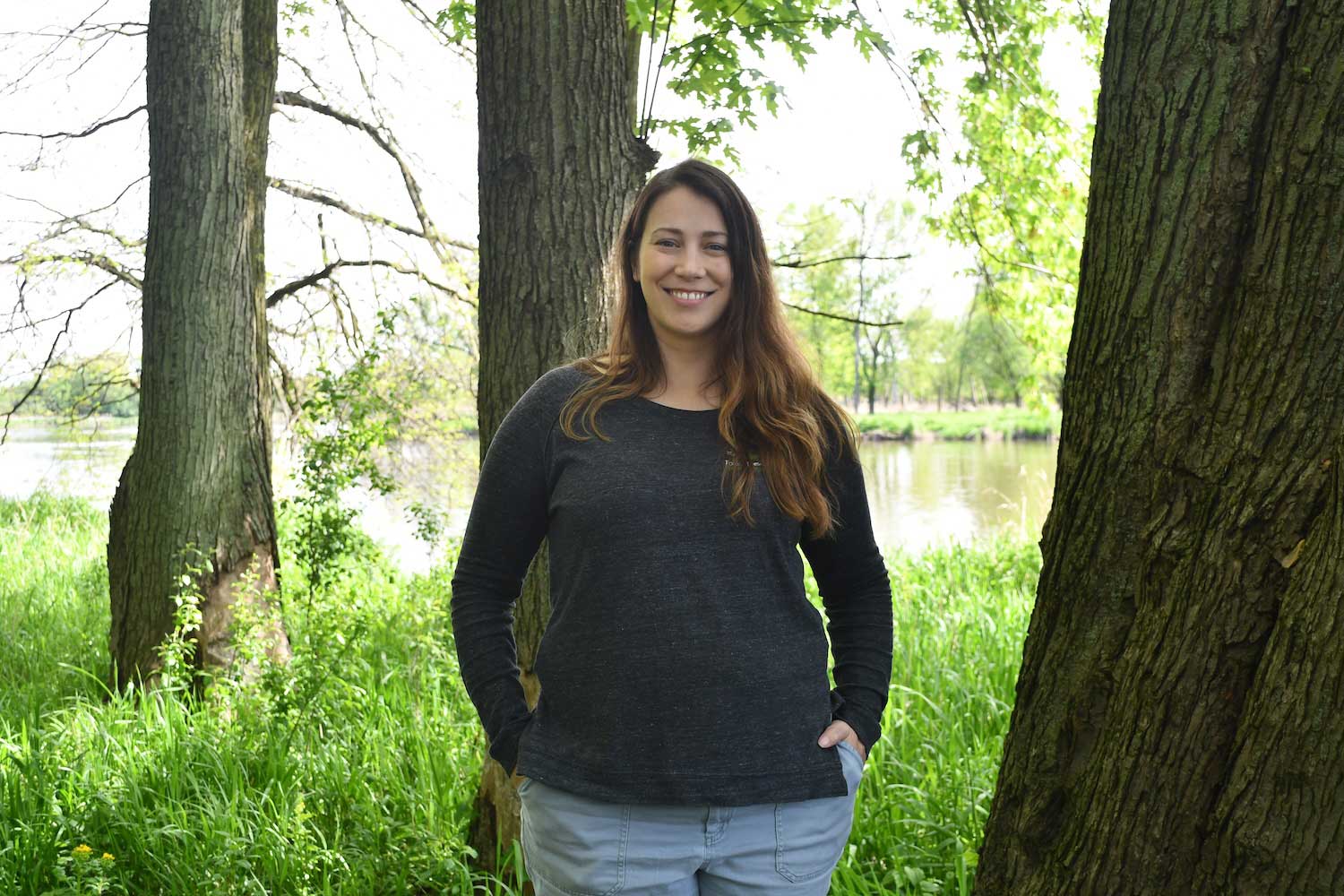Meet a Naturalist: Sara Russell, weaving history, culture and nature together

Sara Russell’s favorite question is “Did you know …?”
She loves to ask did you know questions, and it also sparks her own curiosity. That did-you-know mentality serves her well in her role as an interpretive naturalist at the Forest Preserve’s Isle a la Cache Museum.
“I’ve always been one of those people who asks, ‘Did you know?’” she said. “There are so many cool things, so many interesting things, so you want to share that with people.”
In fact, sharing her knowledge with others is one of the most rewarding parts of the job, she said. “You get to open up people’s worlds. That is so cool.”
She loves that her job allows — or even requires — her to constantly be learning because it lets her fulfill her curiosity about the world around her.
That curiosity is what led her to study anthropology in college. “I love the nuances of it, getting to take bits and pieces from everywhere to tell a story,” she said. It’s also what has made her job as an interpretive naturalist such a good fit for her.
What initially drew her to anthropology was the idea that who we are as individuals is the result of all these bits and pieces from our background and culture. “I just think that that’s so interesting, that those little pieces come together to make us all who we are,” she said.
The similarities and commonalities between people and even between humans and other species can then be entry points for people to start to learn something new, she said. One such example: “Birds have accents — how crazy and cool is that? We are more similar than we think we are.”
Finding common ground makes it easier to understand or be empathetic to other people, other cultures and even other creatures, so it’s a good starting point.
“We are the center of our universe, right? So how do you become interested or why do you care about something? It helps to have an understanding that relates to you a little bit,” Russell said.
In her role at Isle a la Cache, Russell gets to focus on both natural history and cultural history, and she enjoys the varied nature of the job. In addition to leading programs and field trips, the staff there get to create museum exhibits, work with animals and chat with museum visitors.
All those experiences offer a lot of opportunities to make connections with the public, and she loves those chances to share knowledge and spark interest in people she meets through her work.
At Isle a la Cache, the interpretive staff portray characters from the fur trade era during field trips, and Russell has a personal connection to her character, Jeannette.
“I was lucky in that my family actually is French Canadian,” she said. “They all came over from Brittany and Normandy and spent time in Canada and then came down here.”
Russell said an aunt had done some genealogy research on her family tree that she looked through as she was developing her character, and she named the character after her mom, from whom she gets her French-Canadian heritage.
“It’s a real connection for me, and so I modeled my character a little bit off of some of those things on a superficial level at least,” she said.
Through her years working with the public, Russell said she has come to realize how important it is to make sure people know how to have their needs met. She jokingly said she never realized the question she would most often get asked is where the restrooms are.
She tries to set people at ease by opening her programs telling people to feel comfortable doing what they need to do to enjoy their time, whether that’s taking a seat or stepping away for a few minutes to use the restroom.
“You have to be comfortable in your environment,” she said. “We want you to be educated, we want you to be entertained, we want you to have fun. But how can you enjoy it if you are on eggshells because you don’t want to upset or disturb anybody?”
Russell said she hopes that one thing people take away from their experiences at the museum is that the history of our region is a long one, longer than the history of the United States or the history of Illinois as a state. People have lived on and worked on this land for centuries, and having an understanding and appreciation of that can help us as we move forward, she said.
“There is this connection between people and the land that they are on,” she said. “This is an ongoing dialogue that happens.”
Although history and the natural world may seem like two distinct topics or fields of study, Russell said there is quite a bit of overlap because of how closely intertwined history, culture and nature are.
“We shape the land, and the land shapes us,” she said. “We are not separate from nature and we never have been.”
About this series: The Forest Preserve's program coordinators, recreation coordinator and interpretive naturalists are among the friendly faces that greet you when you visit any of our visitor centers and preserves. They are the men and women who lead the District's public programs as well as educational and recreational programs held in the preserves and beyond. They are the people who pique your curiosity and answer your queries, and we want you to get to know more about them and what drives them.
